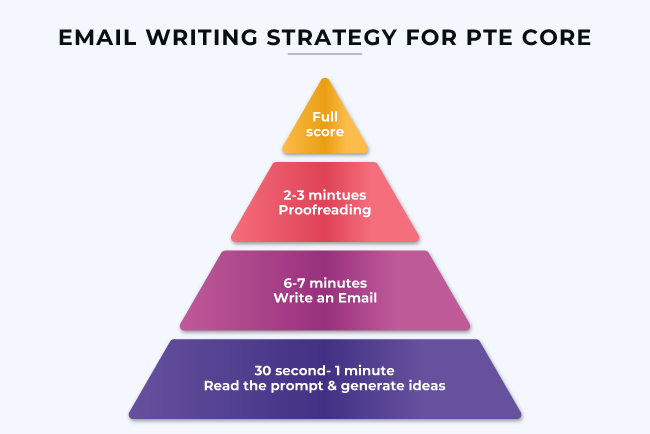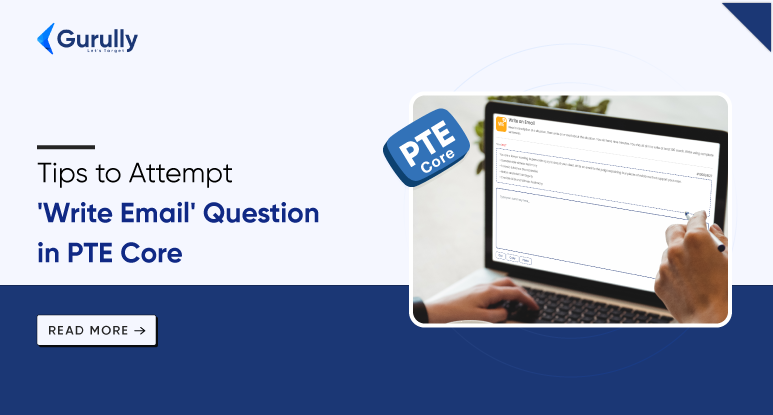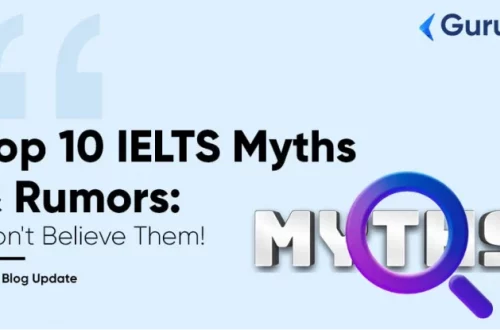The PTE Core is a growing choice for demonstrating your English language skills. If you plan to take the test, staying up-to-date on the writing section’s question types is crucial for success.
The PTE Core exam throws a variety of writing tasks your way, and composing an effective email is crucial. It can feel daunting with a tight time limit and specific criteria. But fear not, aspiring PTE test takers! This guide equips you with the knowledge and strategies to excel in the “Write Email” section.
What is “Write Email”
First, let’s break down the email writing task in PTE Core. You’ll be presented with a prompt outlining a specific situation. Based on this prompt, you’ll need to write an email of approximately 100 words within a limited timeframe of 9 minutes.
The prompt will usually include details about:
- Recipient: To whom are you addressing the email (e.g., colleague, manager, neighbor)?
- Purpose: What’s the reason for writing the email (e.g., request information, express concern, offer suggestions)?
- Required Details: Specific information you need to convey in the email (e.g., dates, deadlines, suggestions).
| Exam Component | Details |
| Total Time Task | 9 Minutes |
| Word Limit | 50-120 |
| Number of Questions | 1-2 |
| Type of Email | Formal, Informal & Semiformal |
| Scoring Criteria | Content, email conventions, form, organization, grammar, vocabulary |
How to Crack “Write Email” Question Type in PTE Core Writing Section
Understanding the Write Email Task
First, let’s break down the email writing task in PTE Core. You’ll be presented with a prompt outlining a specific situation. Based on this prompt, you’ll need to write an email of approximately 100 words within a limited timeframe of 9 minutes.
The prompt will usually include details about:
- Recipient: To whom are you addressing the email (e.g., colleague, manager, neighbor)?
- Purpose: What’s the reason for writing the email (e.g., request information, express concern, offer suggestions)?
- Required Details: Specific information you need to convey in the email (e.g., dates, deadlines, suggestions).
Try to Write Effective Email :
Now that you understand the task format let’s dive into how to write a high-impact scoring email.
- Time is precious in the PTE exam, so effective planning goes a long way. Here’s how to approach the pre-writing stage:
- Read the prompt carefully: Don’t skim through it. Identify all the crucial details: recipient, purpose, and required information.
- Organize your thoughts: Briefly jot down the key points you must address in the email.
- Structure your email mentally: Decide on a clear opening, body, and closing structure.
Write With Clarity & To-the-point
Once you have a plan, it’s time to translate your thoughts into clear and concise email language.
- Formal vs. Informal: The prompt will usually indicate the formality level of the email. Maintain a professional tone while avoiding stiff or overly formal language in semi-formal situations.
- Sentence Structure: Use clear and concise sentences. Aim for a mix of sentence lengths to avoid monotony.
- Grammar and Vocabulary: Ensure proper grammar and use an appropriate level of vocabulary that demonstrates your language proficiency.
Craft Correct Email Structure:
Let’s dissect the essential elements of a strong email structure in PTE Core:
- Opening (Greeting): Depending on the formality level, use a professional salutation like “Dear [Recipient Name]” or “Hello [Recipient Name].”
- Body Paragraph(s): This is the heart of your email. Clearly state the purpose of your email and provide the required information. Use transitions to connect your ideas smoothly.
- Closing: Conclude the email with a closing phrase like “Sincerely,” “Best Regards,” or “Thanks,” followed by your name (optional).
| Email Conventions | Examples |
| Formal Greetings | Dear (name), Good morning/afternoon (name), Respected (name), Greetings (name), To whom it may concern, |
| Informal Greetings | Hi (name), Hello (name), Hello team |
| Formal Signoffs | Warm regards, Sincerely, Best regards, Yours respectfully, Kind regards, Thanks, |
| Informal Signoffs | Thanks, Warmly, Regards, See you, Best wishes, |

Example :
Question:
You are a web developer at a software company and need to request a leave of absence to attend a web development conference. How would you frame an email to your manager, Ms. Lee?
Answer:
Dear Ms. Lee,
I’d like to request leave to attend the [Conference Name] on web development (from [Start Date] to [End Date]). It covers [mention key areas], directly benefiting projects like [project names].
By attending, I can learn new technologies and best practices through networking with experts. I’ve completed [key tasks] and will ensure everything is documented. I’ll be available remotely for emergencies and share conference insights upon return.
Thank you for your consideration.
Sincerely, [Your Name]
How Scoring Is Done For “Write Email”
Two things are mainly checked:
- What you say (Content): This is the most important part. Did you answer the prompt correctly and give all the necessary information? Irrelevant answers or having no answer at all get zero points here.
- How you say it (Form): This is like following email writing rules. Did you use a proper greeting, structure your message clearly, and use good grammar and spelling?
Further Breakdown:
- They might not even check the “form” part if your email is too short or long.
- If you do meet the length requirement, they’ll check things like:
- Did you use a proper salutation (Dear Mr./Ms. Last Name)?
- Is your email organized and easy to follow?
- Do you use a variety of words and avoid mistakes?
Click to know how to score high in Respond to a Situation.
In addition to knowing how to crack this question type, you must practice carefully. Gurully offers you an online practice platform to practice this question type. We also provide you with a full-length mock test to prepare PTE Core. You can also customize the plan according to your needs.
Conclusion:
We’ve shown you how to understand the prompts, write clear and strong content, and structure your emails in a way that scores high. Now, it’s time to put those skills into action! Set a timer for 9 minutes (just like the real test) and practice writing emails based on sample prompts you can find online.
The more you practice under timed conditions, the more comfortable and confident you’ll feel on test day. Remember, even small mistakes can add up, so focus on getting all the key points from the prompt into your email while keeping your grammar and vocabulary accurate. With hard work, the right approach, and plenty of practice, you’ll write your way to a fantastic PTE score!






